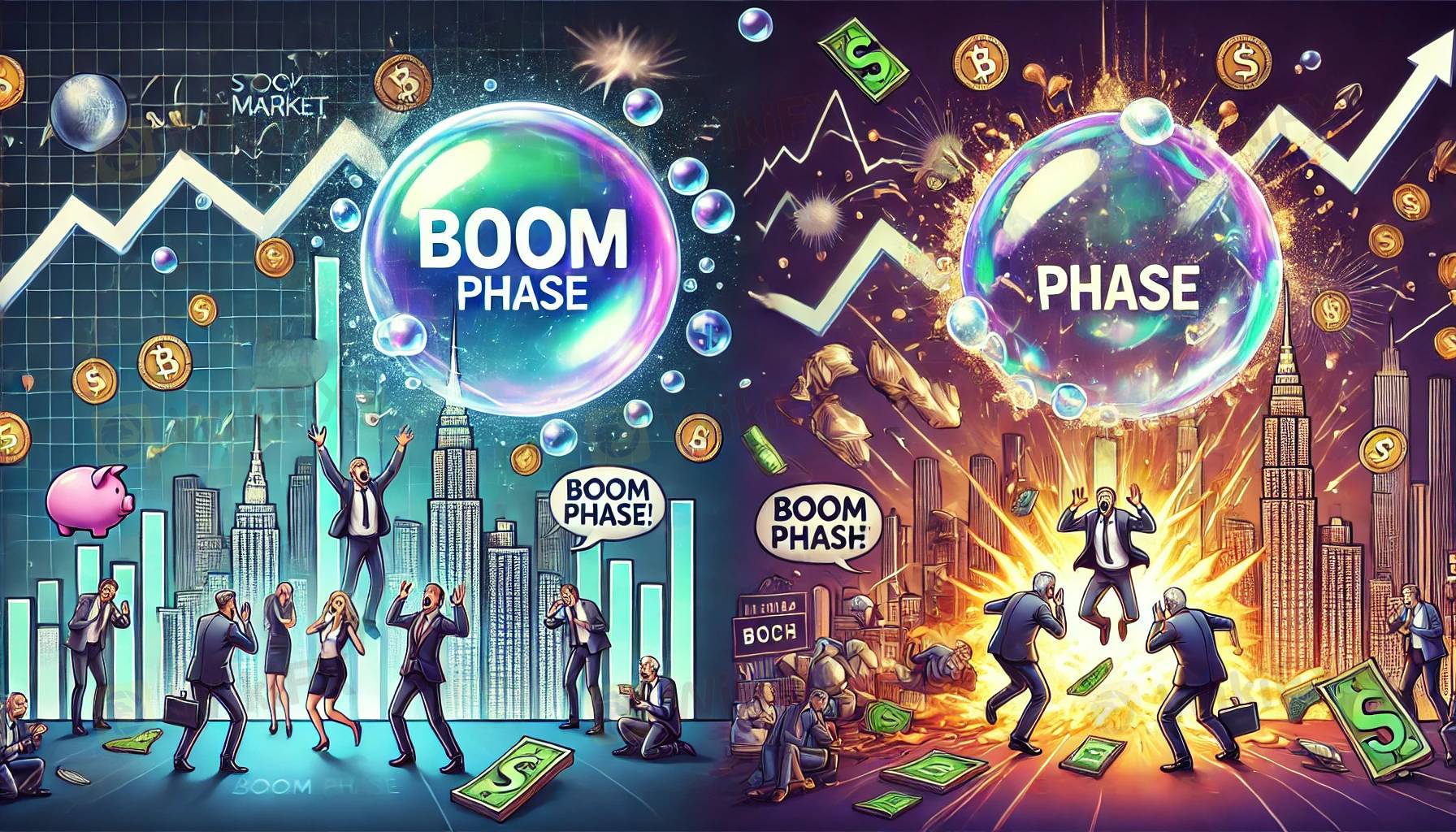
2025-02-17 16:29
IndustryFinancial Market Bubbles and Crashes
#firstdealofthenewyearastylz
Financial market bubbles and crashes are key phenomena in economic history, often driven by speculation, herd behavior, and excessive risk-taking. Here's a breakdown of both concepts:
1. What is a Financial Market Bubble?
A financial market bubble occurs when the price of an asset (stocks, real estate, cryptocurrencies, etc.) rises significantly above its intrinsic value due to speculative demand. These bubbles are typically fueled by investor optimism, easy credit, and excessive risk-taking.
Phases of a Bubble:
1. Displacement – A new innovation or event excites investors (e.g., tech boom, housing market expansion).
2. Boom – Prices rise as more investors join, creating momentum.
3. Euphoria – Irrational exuberance leads to extreme price inflation.
4. Profit-Taking – Smart investors begin selling assets, sensing overvaluation.
5. Panic & Collapse – Prices plummet as confidence erodes, leading to a crash.
2. What is a Financial Market Crash?
A crash is a sudden and significant drop in asset prices, often following a bubble. Crashes are typically triggered by economic downturns, policy changes, or external shocks (wars, pandemics, etc.).
Causes of Market Crashes:
Overvaluation – When asset prices significantly exceed their fundamental values.
Leverage & Debt – Excessive borrowing amplifies risks.
Investor Panic – Rapid selling creates a downward spiral.
External Shocks – Political, economic, or global events can trigger sell-offs.
3. Historical Examples of Bubbles & Crashes
Tulip Mania (1637) – The first recorded bubble in Dutch tulip bulbs.
South Sea Bubble (1720) – British investors speculated on trade with South America.
1929 Stock Market Crash – Led to the Great Depression.
Dot-Com Bubble (2000) – Tech stocks soared before crashing.
2008 Financial Crisis – Housing market collapse due to subprime mortgages.
Crypto Boom & Bust (2017, 2021) – Bitcoin and other cryptocurrencies saw wild price swings.
4. How to Identify and Protect Against Bubbles
Analyze Fundamentals – Look at earnings, revenue, and real value.
Beware of Excessive Leverage – Avoid high levels of debt.
Stay Rational – Don't follow market hysteria.
Diversify Investments – Spread risk across asset classes.
Watch Market Sentiment – Extreme optimism is often a red flag.
Would you like a deeper dive into a specific crash or bubble?
Like 0

Sistmeg
Broker
Hot content
Industry
Event-A comment a day,Keep rewards worthy up to$27
Industry
Nigeria Event Giveaway-Win₦5000 Mobilephone Credit
Industry
Nigeria Event Giveaway-Win ₦2500 MobilePhoneCredit
Industry
South Africa Event-Come&Win 240ZAR Phone Credit
Industry
Nigeria Event-Discuss Forex&Win2500NGN PhoneCredit
Industry
[Nigeria Event]Discuss&win 2500 Naira Phone Credit
Forum category

Platform

Exhibition

Agent

Recruitment

EA

Industry

Market

Index
Financial Market Bubbles and Crashes
 Hong Kong | 2025-02-17 16:29
Hong Kong | 2025-02-17 16:29
#firstdealofthenewyearastylz
Financial market bubbles and crashes are key phenomena in economic history, often driven by speculation, herd behavior, and excessive risk-taking. Here's a breakdown of both concepts:
1. What is a Financial Market Bubble?
A financial market bubble occurs when the price of an asset (stocks, real estate, cryptocurrencies, etc.) rises significantly above its intrinsic value due to speculative demand. These bubbles are typically fueled by investor optimism, easy credit, and excessive risk-taking.
Phases of a Bubble:
1. Displacement – A new innovation or event excites investors (e.g., tech boom, housing market expansion).
2. Boom – Prices rise as more investors join, creating momentum.
3. Euphoria – Irrational exuberance leads to extreme price inflation.
4. Profit-Taking – Smart investors begin selling assets, sensing overvaluation.
5. Panic & Collapse – Prices plummet as confidence erodes, leading to a crash.
2. What is a Financial Market Crash?
A crash is a sudden and significant drop in asset prices, often following a bubble. Crashes are typically triggered by economic downturns, policy changes, or external shocks (wars, pandemics, etc.).
Causes of Market Crashes:
Overvaluation – When asset prices significantly exceed their fundamental values.
Leverage & Debt – Excessive borrowing amplifies risks.
Investor Panic – Rapid selling creates a downward spiral.
External Shocks – Political, economic, or global events can trigger sell-offs.
3. Historical Examples of Bubbles & Crashes
Tulip Mania (1637) – The first recorded bubble in Dutch tulip bulbs.
South Sea Bubble (1720) – British investors speculated on trade with South America.
1929 Stock Market Crash – Led to the Great Depression.
Dot-Com Bubble (2000) – Tech stocks soared before crashing.
2008 Financial Crisis – Housing market collapse due to subprime mortgages.
Crypto Boom & Bust (2017, 2021) – Bitcoin and other cryptocurrencies saw wild price swings.
4. How to Identify and Protect Against Bubbles
Analyze Fundamentals – Look at earnings, revenue, and real value.
Beware of Excessive Leverage – Avoid high levels of debt.
Stay Rational – Don't follow market hysteria.
Diversify Investments – Spread risk across asset classes.
Watch Market Sentiment – Extreme optimism is often a red flag.
Would you like a deeper dive into a specific crash or bubble?
Like 0
I want to comment, too
Submit
0Comments

There is no comment yet. Make the first one.

Submit
There is no comment yet. Make the first one.